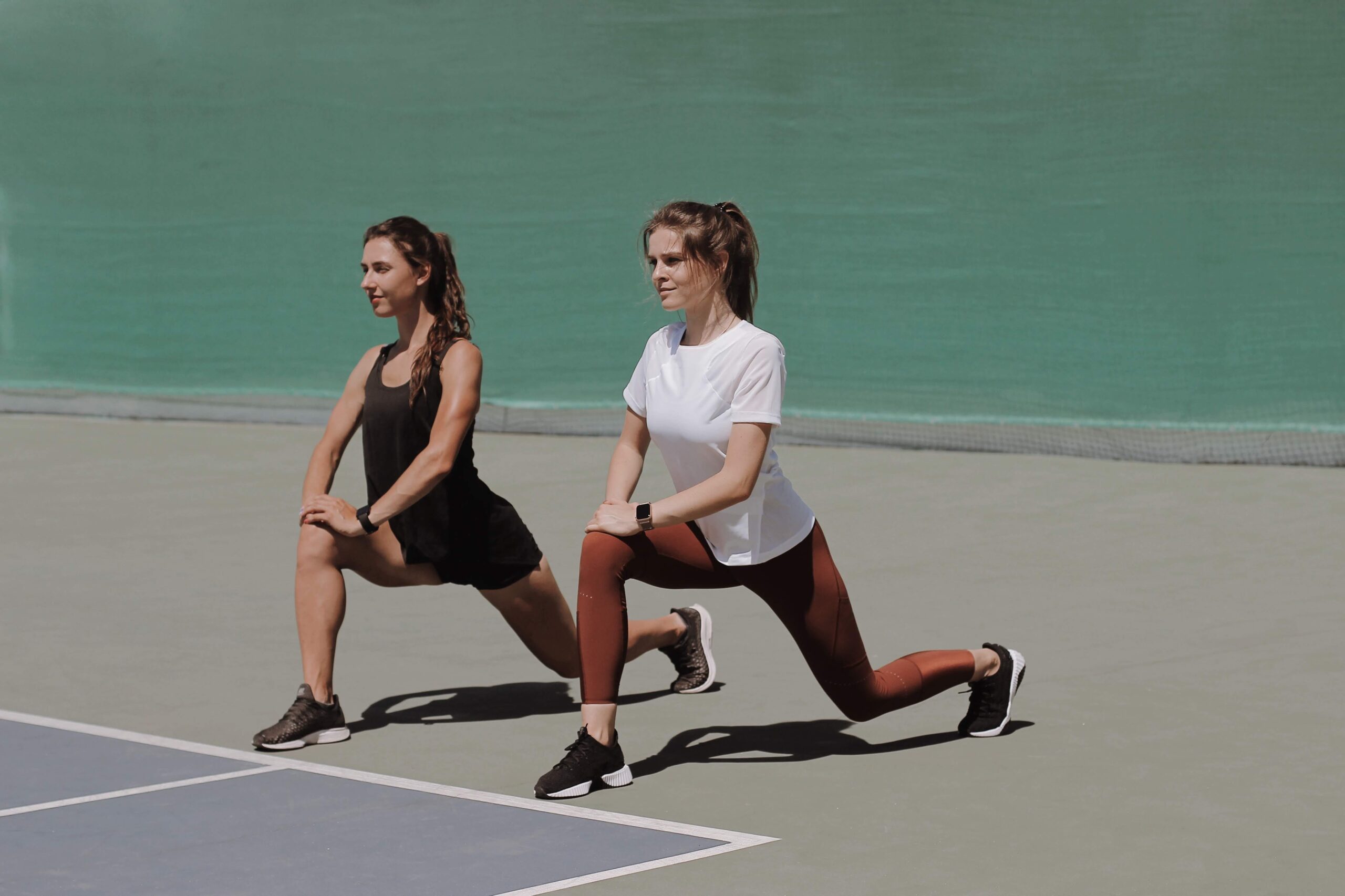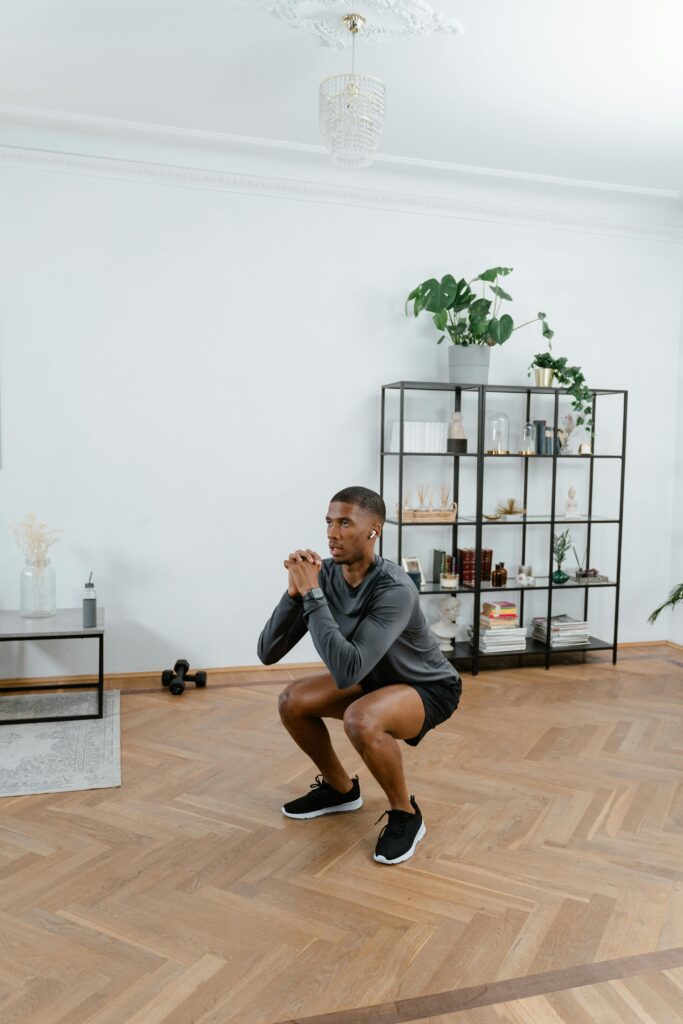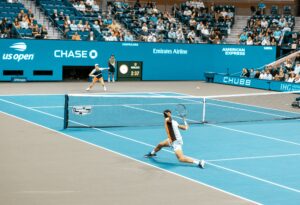The Ultimate Leg Workout for Tennis Players – Improve Your Fitness with these 7 Tennis Legs Exercises

In This Article
As a player, having strong tennis legs is essential for generating power in your shots, quick movement around the court, and preventing injuries. If you’re looking to take your tennis fitness to the next level, incorporating a comprehensive leg workout into your training routine is a must.
The ultimate leg workout for tennis players should focus on building strength, stability, and explosiveness in the lower body. This means targeting the quads, hamstrings, glutes, and calves with a variety of exercises.
Some of the best tennis legs exercises for all players include squats, lunges, deadlifts, step-ups, and plyometric exercises like box jumps. These exercises will not only improve your leg strength but also enhance your balance and coordination on the court.
In addition to the traditional leg exercises, it’s important to incorporate sport-specific movements into your workouts. This can include lateral lunges, lateral bounding, and lateral bounds with a medicine ball to simulate the side-to-side movements that are common in tennis.
By dedicating time and effort to a comprehensive leg workout, you’ll see a significant improvement in your tennis game. So, get ready to strengthen your legs and take your tennis fitness to new heights!
Why Are Strong Tennis Legs Important to Improve Footwork and Court Coverage?
- Speed and Agility: In tennis, you’re frequently required to change direction rapidly. Strengthened legs can aid in swift lateral movements, helping you reach every ball.
- Endurance: Long matches can be grueling. With strong legs, you can sustain your energy and keep fatigue at bay.
- Power: Whether you’re serving or smashing, the power primarily originates from your legs. Stronger legs translate to harder shots.
7 Best Tennis Legs Exercises:
Building strong legs is not just about aesthetics; it’s about creating a solid base that can withstand the rigors of intense tennis play. The following exercises are carefully curated to develop strength, power, and endurance in the muscles most utilized during a match. From the explosive sprints to the quick lateral movements, each exercise is designed to target key areas that will contribute to a well-rounded athletic performance on the tennis court. Incorporate these movements into your repetition routine to create tennis legs that are not only powerful and agile but also resilient against injury.

1. Lunges
Lunges are a fundamental exercise that mimic the forward movements and stances commonly used in tennis. They are excellent for developing unilateral strength, which can improve balance and coordination on the court. Whether you’re stretching to reach a wide serve or setting up for a forehand, lunges help build the necessary leg strength for these movements.
- How to: Stand upright. Step forward with one leg and lower your body until both knees are bent at a 90-degree angle. Push back up and repeat with the opposite leg.
- Benefit: Enhances stability and works on the quadriceps, hamstrings, and glutes, critical muscles for tennis.
2. Squats
Squats are the quintessential leg exercise, engaging the major muscle groups that are crucial for lower body strength and stability. They serve as a solid foundation for a tennis player’s strength training regimen, helping to improve form and function during play.
- How to: Stand with feet shoulder-width apart. Lower your body as if sitting in a chair, keeping your back straight. Push through the heels to return to the starting position.
- Benefit: Boosts power in the quads, hamstrings, and glutes, vital for explosive tennis movements.
3. Plyometric Jumps
Plyometric jumps, often referred to as jump training, are all about explosive power. This type of exercise is designed to increase speed and force, which are crucial for quick, powerful movements on the tennis court.
- How to: Start in a squat position. Jump as high as possible, swinging your arms upward. Land softly and immediately jump again.
- Benefit: Increases explosive strength and power, essential for those fast-paced rallies.
4. Calf Raises
Calf raises are a simple yet effective exercise aimed at strengthening the lower leg muscles. These muscles play a significant role in propelling you around the court and are vital for maintaining quick footwork during lengthy matches.
- How to: Stand upright with feet hip-width apart. Raise your heels off the ground, putting the weight on your toes. Lower and repeat.
- Benefit: Strengthens the calf muscles, offering more push-off power for sprints and jumps.
5. Side-to-Side Drills
The tennis court demands multi-directional movement, making side-to-side drills an essential part of a tennis player’s leg workout. They improve lateral movement and agility, helping players to cover more court and respond to their opponent’s shots with speed.
- How to: Place cones or markers in a straight line, about 2 feet apart. Start at one end and shuffle sideways, navigating around each cone.
- Benefit: Enhances lateral movement speed, vital for covering the width of the tennis court.
6. Step-Ups
By adding step-ups to your training regimen, you’re not only increasing the strength and endurance of your leg muscles but also working on coordination and balance—both essential for the dynamic movements required on the tennis court. Remember to maintain proper form throughout the exercise to maximize its benefits and minimize the risk of injury.
- How to: Find a bench or a sturdy platform roughly knee-high. Place one foot on the bench, push through your heel, and lift your body up until the leg on the bench is straight. Step down and repeat with the other leg.
- Benefit: This exercise targets your quads, hamstrings, and gluteal muscles. It also improves balance and mimics the motion of running, which is beneficial for tennis players who need to quickly change directions and levels during a match.
7. Agility Ladder Drills
Agility ladders are a dynamic tool that helps improve footwork, an essential aspect of tennis. The variety of patterns and drills available can simulate on-court movement, enhancing a player’s ability to move quickly and efficiently.
- How to: Lay down an agility ladder. Move through the squares using various footwork patterns (e.g., in-and-outs, lateral hops).
- Benefit: Boosts footwork speed and precision, crucial for tennis positioning.
Tips to Enhance Leg Strength for All Tennis Players:
- Consistency is Key: Like mastering a forehand, building tennis legs requires regular training. Aim for 3-4 leg workouts a week.
- Incorporate Cardio: Endurance is vital. Mix in cardiovascular exercises, like running or cycling, to boost your leg stamina.
- Stretch: Post-exercise, ensure you stretch your leg muscles. This aids recovery and maintains flexibility, reducing injury risk.
- Fuel Right: Nutrition plays a role in muscle development. Consume a balanced diet with adequate protein to support your tennis legs journey.
- Get Expert Advice: Consider working with a personal trainer or tennis coach. They can offer personalized guidance tailored to your needs.
Final thoughts on Tennis Legs
In conclusion, a strong foundation is crucial for tennis success, and that foundation is your legs. By integrating these exercises and tips into your routine, you’re not only bolstering your tennis legs but also setting the stage for an elevated on-court performance. Game, set, and match!
FAQ
Most Frequently Asked Questions and Answers
How can I improve my leg strength for tennis?
Improving leg strength for tennis involves a combination of resistance training, agility exercises, and plyometrics. Incorporate exercises such as lunges, squats, and step-ups into your routine.
Additionally, practice sport-specific drills like side-to-side shuffles and agility ladder drills to enhance your functional strength on the court. Consistency is key, so aim to work on your leg strength several times a week.
What is the fastest way to build strong tennis legs?
The fastest way to strengthen your legs is to engage in high-intensity resistance training that targets all the major muscle groups in your legs.
Compound movements like squats and deadlifts are efficient as they work multiple muscles at once. Pair these with plyometric exercises such as box jumps or burpees to recruit fast-twitch muscle fibers, which are crucial for explosive movements.
How do you strengthen your calves for tennis?
To strengthen your calves for tennis, perform exercises that target both the gastrocnemius and soleus muscles.
Regular calf raises with slow, controlled movements can effectively build strength. Incorporate both seated and standing calf raises to hit different parts of the muscles.
Additionally, jumping rope is an excellent calf-building exercise that also improves footwork and cardio endurance.
How can I strengthen my legs at home?
Strengthening your legs at home can be done effectively with bodyweight exercises. Squats, lunges, and single-leg bridges are great starters.
If you have resistance bands or dumbbells, add them to increase difficulty. You can also use stairs for step-ups or calf raises.
Be creative with household items—like using a chair for Bulgarian split squats—to add variety to your workouts.
How often should I train my legs for tennis?
Leg training frequency can vary based on your overall fitness level, schedule, and tennis goals.
However, a good rule of thumb is to dedicate 2-3 days per week to lower body strength and agility training, allowing for rest or active recovery days in between to prevent overuse injuries.
Can leg strength help with my tennis serve?
Absolutely, leg strength is a critical component of a powerful tennis serve.
Strong legs allow you to generate upward force through the ground, transferring energy into your trunk and upper body as you strike the ball.
Incorporating leg press, squats, and plyometric exercises can significantly contribute to the explosiveness of your serve.
How to get strong tennis legs like Serena Williams?
Achieving legs like Serena Williams, known for her powerful lower body that has propelled her to countless victories, requires dedication, proper nutrition, and a well-structured training program.
Start with exercises that focus on building strength and power—squats, deadlifts, and lunges should be staples in your routine. Plyometric exercises, such as jump squats and box jumps, can help develop explosive power.
It’s also important to incorporate agility drills and sprinting to emulate the quick movements required on the tennis court. Remember, consistency and intensity, along with adequate recovery, are key to building strong, athletic legs.
Additionally, Serena’s regime is likely complemented by a diet rich in lean proteins, complex carbohydrates, and healthy fats to fuel muscle growth and recovery.
Can someone who doesn't have strong knees play tennis?
Yes, someone with weaker knees can play tennis, but it’s important to approach the game with care.
Strengthening the muscles around the knee—quadriceps, hamstrings, and calves—can provide better support and potentially reduce discomfort. Low-impact exercises and physical therapy can improve knee strength over time.
It’s also crucial to wear proper footwear that provides good support and to use knee braces if recommended by a healthcare professional.
Before starting tennis or any new exercise regimen, it’s advisable to consult with a physician or a physical therapist, especially if there’s a history of knee issues.
Modifications to your playing style and training routines can also help manage knee stress. Regular breaks and not overloading the knees with excessive play are important considerations for those concerned about knee strength.


